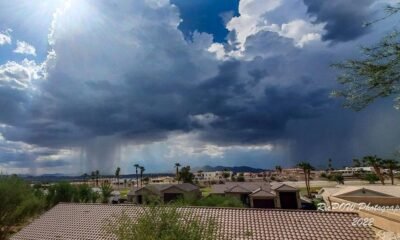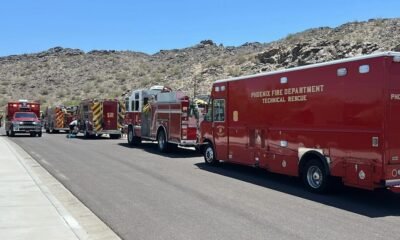arizona
Paris Olympics: Arizona’s Heat and High Altitude Become the Training Ground for Elite Athletes

The recent Paris Olympics showcased the effectiveness of Arizona’s unique training environments for elite athletes. By combining high-altitude conditions with extreme heat, athletes are finding optimal preparation for international competition. Locations like Flagstaff, known for its mountainous elevations, and the warmer climates of Tucson and Phoenix provide essential training benefits that enhance endurance and resilience.
Before the Tokyo Games, around 250 Olympians and Paralympians utilized Flagstaff’s ideal conditions, with many also seeking out the warmer winters in southern Arizona. A similar trend was observed in the lead-up to the Paris Olympics.
Among those who benefited from this training regimen is Grant Fisher, who won bronze in both the men’s 5,000 and 10,000 meters. Triathlete Kirsten Kasper also trained in the Phoenix area, taking advantage of the region’s forgiving winter weather.
Flagstaff has gained recognition globally as a prime location for endurance athletes due to its altitude and supportive community. Elite running clubs are predominantly based there, drawing competitors from across the world.
“Training at high altitude forces the body to adapt, increasing red blood cell production and improving aerobic efficiency,” explained Jarred Cornfield, cross country coach at Northern Arizona University. The city’s advantageous conditions, including soft surface trails, make it an ideal training hub for athletes preparing for high-stakes competitions.
NAU, located at an elevation of 7,000 feet, has established itself as an attractive spot due to its training capabilities. Cornfield noted, “The altitude aids in adapting to higher training levels, which is vital for success in competition.”
Jillian Camarena-Williams, a two-time Olympic shot-putter, also highlights the benefits of Arizona’s climate, recalling her experience training during Tucson’s monsoon season. “It felt similar to the weather in Beijing, providing excellent preparation. The heat helped with my injuries too; I found it easier to warm up compared to cold environments,” she said.
NAU distance runners emphasize the key physiological advantages of high-altitude training. “Increasing that red blood cell count is huge,” one athlete remarked. Training in thinner air boosts the body’s red blood cell production, granting them a competitive edge once they return to lower altitudes.
Brittany Garcia, a former assistant athletic trainer at Arizona State now working in Paris, acknowledges Arizona’s rising profile as a premier training location. “The combination of high altitude and desert heat has proven beneficial, and more athletes are utilizing Arizona for their preparations,” she said.
Kasper chose Arizona for her winter training to avoid the frigid temperatures of Boulder, Colorado. “Spending February in Phoenix and Scottsdale allowed me to escape the snow. Consistent warm, sunny days made endurance training much more manageable,” she expressed.


















